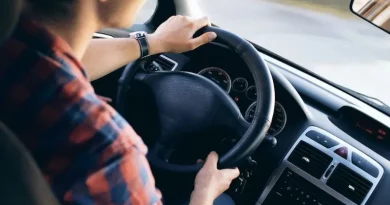What Should Go in a Car Emergency Kit?
There’s nothing quite like taking to the open road, whether you’re going on a vacation or just taking a quick drive around town to clear your head. However, it’s important to be prepared for anything when you leave the house. Whether you experience a breakdown, a flat tire, or unforeseen weather, having a well-stocked emergency kit in your car can be a literal life-saver.
By equipping your car with a carefully-prepared emergency kit, you can turn trip-wrecking disasters into minor inconveniences. We’ve created a guide to help you build an all-around vehicle emergency kit for just about any situation.
Packing the Basics for Survival in an Emergency
If you find yourself stranded in a desolate area, you’ll be thankful to have survival essentials in your car’s trunk. If your vehicle is disabled, the first priorities become food, water, and warmth. Your emergency kit should contain enough non-perishable snacks and bottled water to sustain everyone in your car for at least 24 hours. Ideally, you’ll have enough supplies to last for several days.
Choose high-calorie snacks like nuts, granola bars, dried fruit, and trail mix for sustained energy. Don’t forget protein bars or jerky for added sustenance, particularly if you have family members or regular passengers with dietary restrictions. Consider including instant oatmeal or soup packets for hot meals if you’re traveling in cold weather.
Thermal blankets provide crucial insulation in cold weather, particularly when an unexpected overnight stay in your car unexpectedly becomes necessary. Your car should have enough blankets for the driver and all passengers. You should choose emergency blankets with reflective surfaces to enhance the visibility of your group in case you become stranded at night. Include warm layers of clothing for everyone as well. Think hats, gloves, scarves, and long-sleeved shirts, along with sturdy shoes that can handle uneven terrain. If anyone in your group suffers harm caused by someone else’s negligence, a personal injury attorney in Jersey City may be able to help.
Preparing for Any Situation
A multipurpose tool can come in handy when dealing with a considerable range of minor repairs and improvisations. Make sure to select a tool with a variety of screwdrivers, pliers, bottle openers, and wire cutters to tackle unexpected tasks. Your kit should also include a sturdy utility knife, duct tape, and zip ties. These items can help you fix broken equipment, secure loose items, create windbreaks, or even fashion a makeshift splint in a true emergency.
You may want to include a small, portable sewing kit for quick repairs to clothing or gear. A multi-function headlamp will come in handy if you get stranded after dark. A headlight also offers the additional benefit of leaving your hands free, so you can work on repairs. Don’t forget a reliable lighter and waterproof matches in case you need to start a fire (with proper caution and only in appropriate circumstances) to provide warmth or signal for help in remote areas.
Packing the First Aid Essentials
A meticulously-prepared first aid kit ensures you’re equipped to handle minor injuries and ailments with ease. Every first aid kit should be tailored to the driver’s unique needs, but a basic set should include:
- Adhesive bandages of various shapes and sizes
- Sterile gauze pads
- Medical tape
- Pain relievers, like ibuprofen or acetaminophen
- Antihistamines for allergic reactions
- Insect repellent and sunscreen
- Any emergency medications required by the vehicle’s occupants
Familiarize everyone in your car with the location and contents of the first aid kit, and ensure they understand how to use the items found within in an emergency.
Essential Equipment for Roadside Emergencies
In case of roadside emergencies, reflective warning triangles and road flares will become your new best friends. They can alert oncoming vehicles of your predicament, so other drivers can see and avoid your vehicle on the road. Choose warning triangles that fold compactly for easy storage when not in use and flares with clear instructions. Again, a headlamp can be incredibly useful if your vehicle breaks down on the side of the road.
You should keep a portable phone charger handy, so you can keep your cellphone alive long enough to seek help. Choose a charger with sufficient capacity to recharge your phone multiple times. A solar-powered charger can come in handy if you find yourself stranded for a considerable amount of time.
Tackling Maintenance Problems
A dead battery can quickly bring any trip to a dead stop. Jumper cables or a portable jump starter can get you back on the road quickly. Choose cables with sufficient gauge and length for your vehicle and make sure you have a jump starter with enough power to start your specific engine size.
You don’t want to find yourself dealing with a blown tire on the road, so make sure to pack a tire pressure gauge and portable air compressor. These tools help you maintain optimal tire pressure, which keeps you safe and preserves fuel at the same time.
If you’re familiar with your car and able to make basic repairs yourself, pack tools like screwdrivers, pliers, and an adjustable wrench. This can save you a tow truck call and expensive mechanic bill if you encounter minor mechanical issues. Choose tools made from durable materials and keep them in a compact tool kit for easy storage and accessibility. Perhaps most crucially, ensure your spare tire is in good condition and readily accessible if it is needed.
For added peace of mind, you can pack a tow rope or recovery straps in your emergency kit. Including these items can allow another vehicle to tow your car to safety if it gets stuck. Include a small fire extinguisher with an easy-to-use trigger for potential fire emergencies. Be sure to call 911 for anything other than a small, easily extinguished fire.
Regularly Inspect & Update Your Emergency Kit
Remember, a car emergency kit should not be a set-it-and-forget-it item. Regularly check expiration dates on food, medication, and flares, and replace them promptly. Inspect your tools and equipment for wear and tear to make sure they are in good condition. Update your first aid supplies and add items as needed. The last thing you want is to experience an emergency and find yourself unprepared.
We hope this article helps you build a versatile emergency kit that can tackle any problem you run into on the road!




